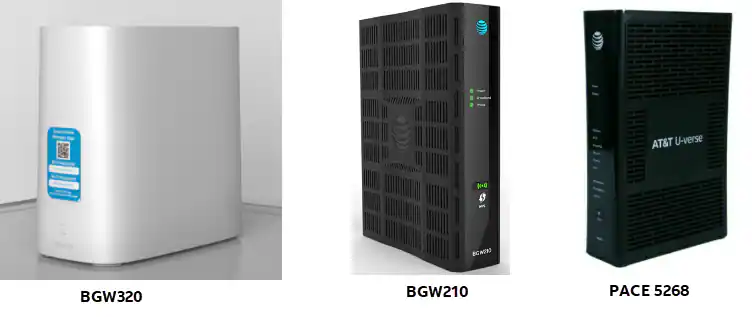User reviews for AT&T Fiber consistently indicate that it is one of the highest-performing and most reliable internet services available today. Customers frequently report strong satisfaction with the core product, praising the stability and speed of the 100% fiber optic connection.
However, many AT&T Fiber reviews point out that the overall customer experience can be complicated by the provider’s billing practices and the complexity of its customer support channels. The decision to switch often comes down to weighing the superior technology against the history of the provider’s service infrastructure.
This comprehensive article analyzes current customer sentiment and details the key factors to consider when choosing an AT&T Fiber plan.

Overall AT&T Fiber Customer Satisfaction
Across multiple consumer data and editorial reviews, AT&T Fiber’s core technical performance receives high marks, distinguishing it significantly from AT&T’s older, copper-based (DSL/IPBB) internet service.
| Customer Metric | Average Rating (Approximate) | Consensus Summary |
| Speed | 3.9 – 4.1 / 5 | Consistently delivers advertised speeds, including multi-gigabit options. |
| Reliability | 3.7 – 3.9 / 5 | High approval rating; fewer outages than cable, often only failing due to external line cuts or power loss. |
| Overall Value | 3.7 – 3.9 / 5 | Excellent value due to symmetric speeds and lack of data caps. |
| Customer Service | 3.5 – 3.8 / 5 | Scores lower than reliability; complaints focus on billing, cancellation process, and long resolution times. |
The Pros and Cons of AT&T Fiber (2025)
The strengths of AT&T Fiber are inherent to the technology, while the weaknesses are often organizational.
Pros: What Reviewers Love
- Symmetrical Speeds (Best Feature): Fiber is powered by light, offering near-equal upload and download speeds (e.g., 500 Mbps down / 500 Mbps up). This is critical for remote workers, video conferencing, online gaming, and cloud backups, where cable providers only offer slow upload speeds.
- No Data Caps: All AT&T Fiber plans (from 300 Mbps up to 5 Gig) come with unlimited data, avoiding potential fees or throttling.
- No Contracts or Equipment Fees: Fiber plans typically include the Wi-Fi gateway/modem rental fee and do not require long-term annual contracts.
- Low Latency (Ping): Fiber offers better consistency and lower latency than cable, resulting in a more responsive experience for real-time applications like competitive gaming.
Cons: Common Customer Complaints
- Availability is Limited: Fiber is not available everywhere. It is currently confined to parts of 21 states, largely in major urban and suburban areas. Customers in rural areas are typically relegated to AT&T Internet Air (5G Fixed Wireless) or older DSL.
- Installation Issues: Some customers report complications during the initial installation, as a new fiber line must be run directly to the house.
- Customer Service Complexity: The most frequent complaints relate to poor communication when issues arise, difficulty canceling service (especially non-prorated bills), and delays in receiving promised gift cards or promotional credits.
- Higher Entry Price: AT&T often lacks a budget-friendly fiber plan (e.g., under $50/month), making the entry price higher than some basic cable or DSL competitors.
Key Features That Offer Best Value
| Plan (Speeds) | Best For | Included Value |
| Internet 300 Mbps | Average Families/Streaming: Excellent reliability and symmetrical speeds for households with 3-5 users and multiple streaming devices. | No data cap, no equipment fee, symmetrical speed. |
| Internet 1 GIG | Elite Gamers/Remote Workers: Provides the bandwidth headroom needed for large, simultaneous downloads, 4K streaming, and constant uploading. | Symmetrical 1 Gbps speeds, no data cap/fee. |
| Internet 5 GIG | Power Users/Small Business: Highest available speeds (up to 4.7 Gbps wired) for high-demand elite users and home servers. | Fastest residential upload/download of major ISPs. |
Frequently Asked Questions (FAQ)
Is AT&T Fiber better than Spectrum or Xfinity?
Yes, for reliability and upload speed. AT&T Fiber’s symmetrical speeds (equal upload/download) and dedicated connection make it technologically superior to the standard coaxial cable service offered by Spectrum and Xfinity, whose upload speeds are significantly slower. If fiber is available, it is generally the superior choice.
Do I have to use the AT&T Wi-Fi router (Gateway)?
Yes, but with limitations. You must typically use the AT&T-provided gateway for the fiber connection’s authentication (often done via a specialized process). However, many power users connect their own, higher-quality mesh Wi-Fi router (like Google Nest or Eero) behind the AT&T gateway to improve in-home Wi-Fi performance.
How do I check if AT&T Fiber is available at my exact address?
You must go to the official AT&T website and enter your specific address on their availability checker. General coverage maps are not accurate enough to guarantee service to your individual home.
Conclusion
AT&T Fiber reviews confirm that the actual internet product is excellent—offering industry-leading speeds, reliability, and superior symmetric performance. Customers overwhelmingly recommend the service where available. The primary friction points are often administrative (billing, support). If AT&T Fiber is available at your address, it is widely considered the best internet technology option and provides excellent long-term value, especially due to its no data cap policy.


